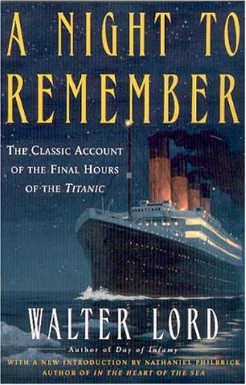In 1898 a struggling author named Morgan Robertson concocted a novel about a fabulous Atlantic Liner, far larger than any that had ever been built. Robertson loaded his ship with rich and complacent people and then wrecked it one cold April night on an iceberg. This somehow showed the futility of everything, and in fact, the book was called Futility when it appeared that year, published by the firm of M. F. Mansfield.
Fourteen years later a British shipping company named the White Star Line built a steamer remarkably like the one in Robertson's novel. The new liner was 66,000 tons displacement; Robertson's was 70,000 tons. The real ship was 882.5 feet long; the fictional one was 800 feet. Both vessels were triple screw and could make 24-5 knots. Both could carry about 3,000 people, and both had enough lifeboats for a fraction of this number. But, then, this didn't seem to matter because both were labelled 'unsinkable'.
On 10 April 1912 the real ship left Southampton on her maiden voyage to New York. Her cargo included a priceless copy of The Rubaiyat of Omar Khayyam and a list of passengers collectively worth 250 million dollars. On her way over she too struck an iceberg and went down on a cold April night.
Robertson called his ship the Titan; the White Star Line called its ship the Titanic. This is the story of her last night.
High in the crow's-nest of the new White Star Liner Titanic, look out Frederick Fleet peered into a dazzling night. It was calm, clear and bitterly cold. There was no moon, but the cloudless sky blazed with stars. The Atlantic was like polished plate glass: people later said they had never seen it so smooth.
This was the fifth night of the Titanic's maiden voyage to New York, and it was already clear that she was not only the largest but also the most glamorous ship in the world.
